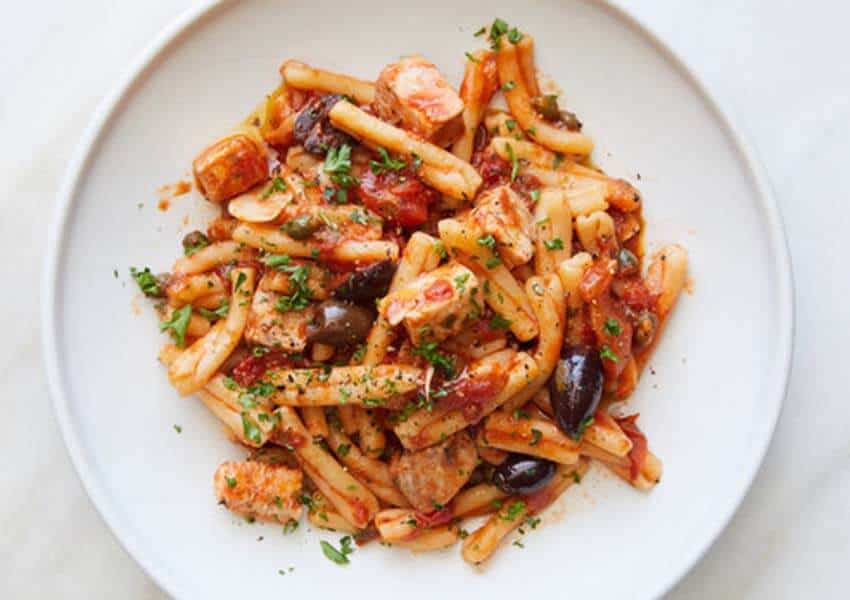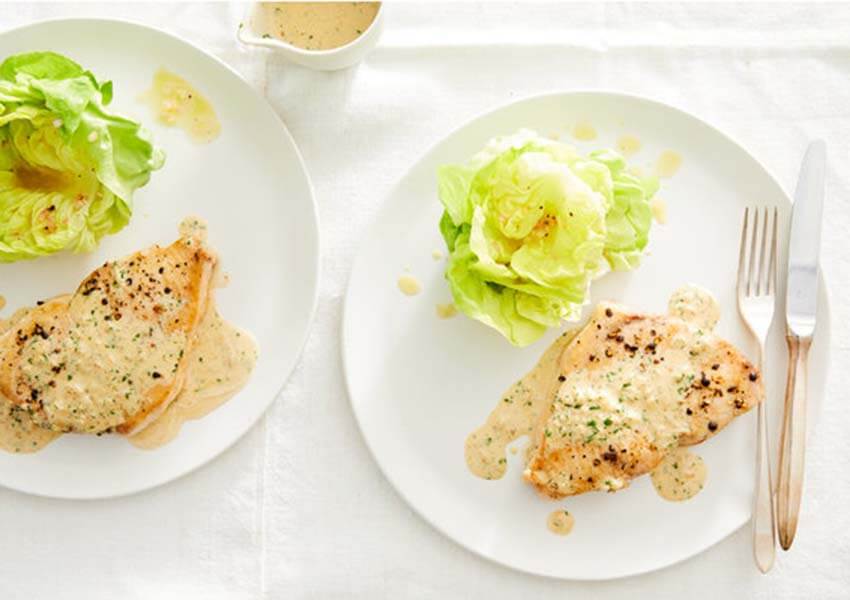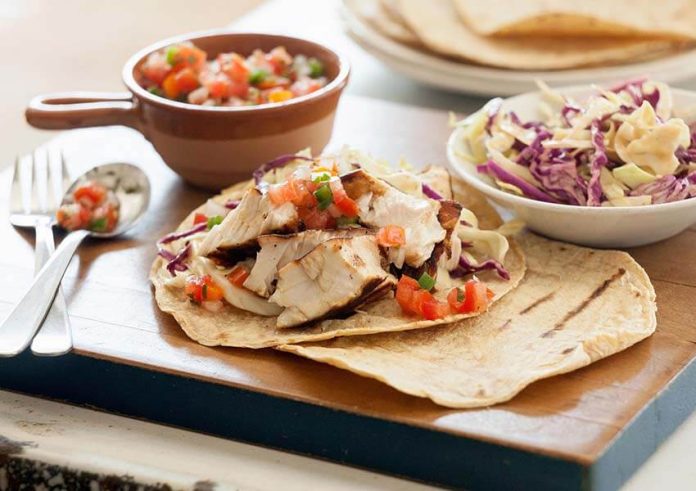First things first: is swordfish safe to eat?
Yes, as long as you’re not eating it every day. Concerns about eating swordfish are rooted in its often high mercury content, a hazard with any fish that lives long, grows large and eats smaller fish (think tuna, shark, marlin).
Mercury accumulates over the lifetime of the fish, attaching to the protein in the flesh; cooking or cleaning won’t remove it. The United States Food and Drug Administration recommends young children, pregnant women and women of childbearing age not eat swordfish; the rest of us are OK eating it a couple of times a week.
The reality is you’d have to eat it every day for months on end in order to possibly be affected by the amount of mercury in the fish.
That’s good news because swordfish is plentiful — and affordable — on both coasts of Mexico.

Their migratory pattern takes them to cooler waters during hot summer months and warmer waters during the winter. Fishing seasons vary depending on location, but frozen swordfish retains its texture and flavor better than most other fish due to its firm, dense makeup.
Although in the past, swordfish was listed as endangered, tightly regulated fishing and increased awareness changed that. This downloadable consumer guide allows you to check the status of just about every kind of seafood.
In Mexico, swordfish (pez espada) are found in the waters off Baja, Nayarit, Sinaloa, Sonora and Guerrero. They are powerful, predatory fish and travel alone, not in schools. They can often be found at the surface of the water or breaching and are one of the world’s largest and fastest fish, able to swim up to 80 kilometers per hour.
Fresh swordfish is a dull white, with a reddish vein in the center of a whole filet. It’s often compared to chicken. It doesn’t have a fishy or oily taste and indeed can be almost sweet. I like to add cooked chunks to pasta primavera, and Swordfish Piccata (recipe below) has become my go-to when I have dinner guests.
Perhaps the easiest way to cook swordfish is to grill it; unlike most fish, the flesh is firm and meaty. Another simple method is to pan-fry it quickly in an equal mixture of olive oil and butter. For one to two steaks, a tablespoon of each should do, heated till hot and bubbling on medium-high in a cast-iron or nonstick skillet. Wash and pat dry the swordfish, sprinkle with salt and pepper and cook the steaks (¾ to 1-inch thick) for three to four minutes on each side, turning once.
Cooked either of these ways, swordfish also makes fabulous tacos.
Swordfish Piccata
- 1½ pounds swordfish, in ¾ -inch slabs
- Salt and pepper
- ½ cup regular flour, sifted
- 2 Tbsp. olive oil
- 9 Tbsp. butter
- 1 Tbsp. finely minced shallot
- ⅙ cup dry white wine
- 2 Tbsp. capers
- Juice of ½ lemon plus wedges for garnish
- 1 Tbsp. minced parsley, plus more for garnish
Season swordfish on both sides with salt and pepper. Dredge in flour, shaking off excess.
In cast-iron or nonstick skillet, heat oil until just smoking over medium-high heat. Add 2 Tbsp. butter until melted and bubbling, about 30 seconds. Place swordfish in pan and cook, turning once, until browned on both sides, 3–4 minutes each side. Transfer to a plate; remove any excess fat from pan.
While pan is still hot, melt 1 Tbsp. butter, add shallots/onions and cook 30 seconds. Deglaze pan with the wine; reduce by half. Add capers and lemon juice; cook 1 minute. Remove pan from heat, add remaining 6 Tbsp. of butter, 1 Tbsp. at a time, swirling pan continuously. Add parsley. Season to taste.
Spoon sauce over fish, garnish with lemons and parsley.

Swordfish au Poivre
- 4 swordfish steaks, about 1-inch thick, skin removed
- Fine sea salt
- 1½ Tbsp. crushed black peppercorns
- 2 Tbsp. olive oil
- 1 Tbsp. unsalted butter
- 1 large shallot, minced
- ½ cup cognac or brandy
- ⅔ cup heavy cream
- 1 Tbsp. minced parsley
Heat oven to 150 F. Dust fish lightly with salt and pepper. Have a baking sheet or ovenproof pan big enough to hold fish in a single layer.
Heat oil to medium-hot in a heavy skillet. Sear fish until barely cooked through and still a bit pink in the center, about 3 minutes on each side. Transfer to baking sheet/ovenproof pan; place in oven and turn off the heat.
Add butter to skillet; add shallot and sauté, stirring, for 2 minutes. Add cognac. Swirl in the pan a minute or so until somewhat reduced and syrupy. Add cream and parsley; continue cooking, stirring, until somewhat thickened.
Remove from heat. Remove fish from oven; serve with sauce poured on top.
Neapolitan Pasta with Swordfish
- 2 Tbsp. olive oil
- ¾ lbs. swordfish steaks, skin removed, cut in ¾-inch cubes
- Salt and pepper
- 1½ Tbsp. capers, rinsed and dried
- 1 Tbsp. thinly sliced garlic
- ¾ cup canned whole tomatoes, chopped
- 10 pitted Kalamata olives
- ½ lb. short pasta, like cavatelli or penne
- Grated zest of ½ lemon
- 1 Tbsp. minced flat-leaf parsley
Heat 1 Tbsp. oil in large nonstick or cast-iron skillet on high; add swordfish pieces in a single layer. Sear about 30 seconds until starting to brown.
Season with salt and pepper; remove to a bowl. Reduce heat to medium. Add remaining oil and capers; cook until capers start to crisp and brown. Turn to low, stir in garlic; cook 1 minute. Add tomatoes and olives. Cook, stirring, for about 10 minutes; turn off heat.
Meanwhile, cook pasta al dente. Drain, reserving ½ cup of pasta water; add pasta to skillet.
Heat on medium-low, gently folding everything together. Add enough pasta water to make a sauce-like consistency.

Gently add swordfish and lemon zest. Transfer to serving dish, scatter parsley on top and serve.
Swordfish Kebabs with Chimichurri
- 2 pounds swordfish steaks (at least 1½ inches thick), skinned and cut into 1½ -inch chunks
- 12 bay leaves (fresh if possible)
- 2 lemons, halved lengthwise and cut crosswise into ¼ -inch slices, seeds removed, plus 1 whole lemon for squeezing
- Salt and pepper
- 2 Tbsp. chopped fresh oregano
- Extra-virgin olive oil
To make kebabs, thread swordfish chunks, bay leaves and lemon slices alternately onto bamboo or metal skewers. Arrange in nonreactive baking dish. Season kebabs on all sides with salt and pepper. Squeeze juice from remaining lemon over them. Sprinkle with oregano; drizzle with olive oil. Turn to coat; marinate in refrigerator 30 minutes.
Build a hot fire in your grill. Oil grate; arrange kebabs over fire. Grill until fish is browned, sizzling and cooked through, 2–3 minutes per side. Baste kebabs with a little chimichurri as they cook. Serve with more chimichurri on the side.
Janet Blaser is the author of the best-selling book, Why We Left: An Anthology of American Women Expats, featured on CNBC and MarketWatch. She has lived in Mexico since 2006. You can find her on Facebook.
